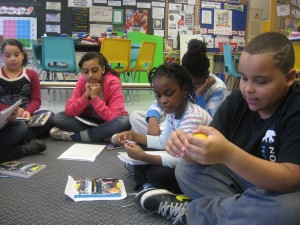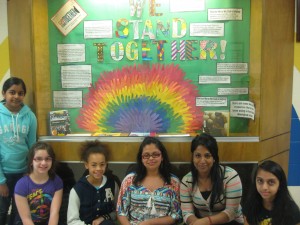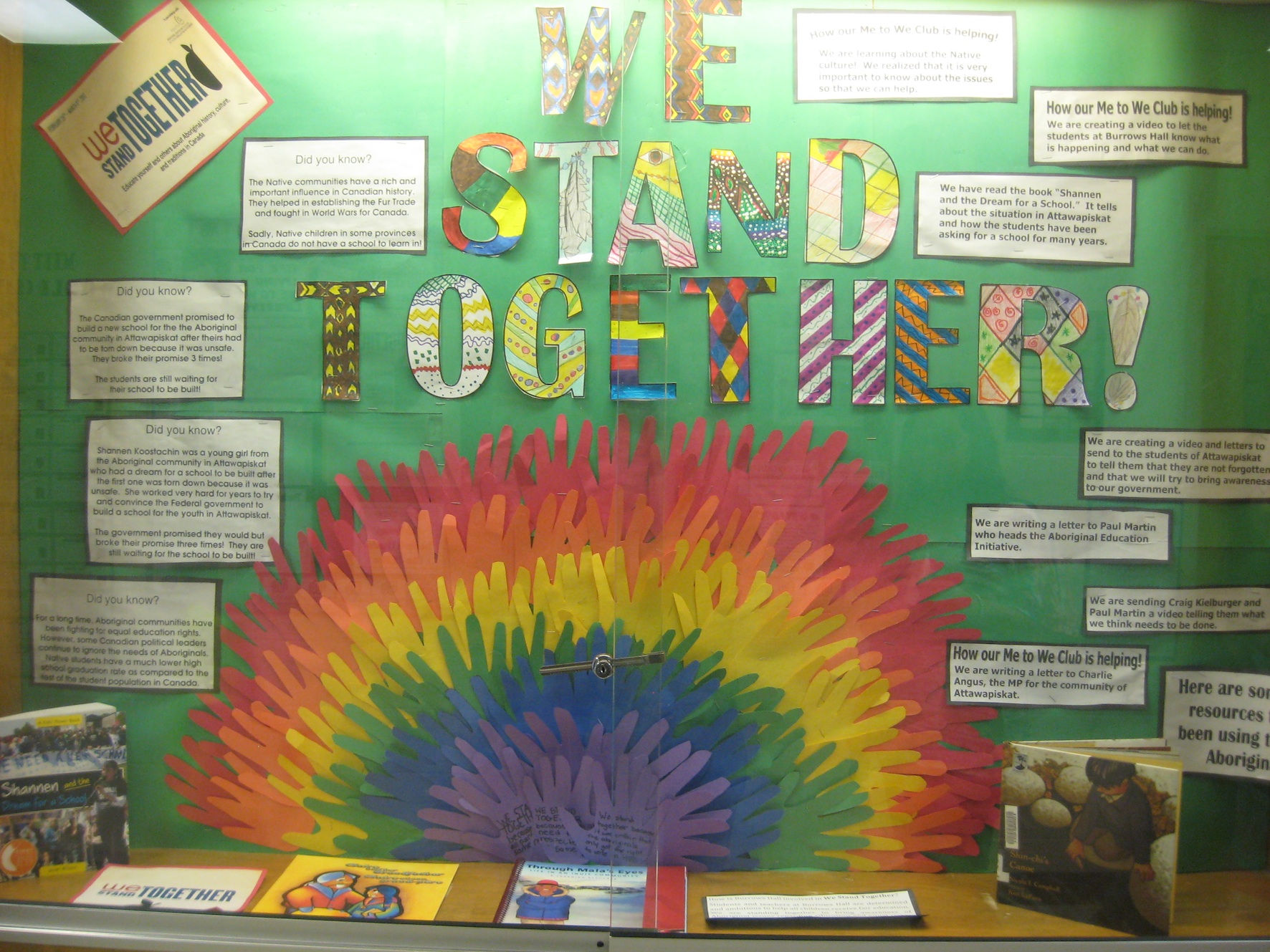The last month has been a whirlwind of learning and creating social action in our classroom! It is amazing how a simple learning goal can transform into an inquiry project that takes us and our students to another level of understanding. Of course, those are the most unforgettable experiences which often lead to continual exploration and questioning. Let me explain…
As part of our Grade 6 unit on Native Peoples, I decided to have students look at history through different perspectives. This meant that we explored their culture, customs, and stories through their eyes. At the same time, students were reading a Silver Birch book entitled “Shannen and the Dream for a School” by Janet Wilson describing the journey taken by an Aboriginal teen living in Attawapiskat who fought to have a new school built after the old one was torn down only to sadly lose her life in a bus accident before seeing her dream become reality. Coincidentally, I received an invitation for my class to take part in an enrichment program headed by Free the Children’s Craig Kielburger and the Paul Martin Aboriginal Education Initiative (MAEI). The We Stand Together initiative would have students explore Aboriginal issues facing communities today while also learning about and celebrating their culture. This invitation could not have come at a better time for us and what unfolded was an inquiry project based around the topic of equity in education for all Canadian students.
The excitement and engagement became immediately palpable once my students felt that what they had studied began to manifest into a relevant and current topic that could bring together so many different people from such diverse backgrounds and cultures. Our learning became embedded into the Arts by exploring Aboriginal art, listening to Aboriginal music, and appreciating their different styles of dance. We looked at the issue of residential schools and how that impacted Aboriginal children and their families. Students decided to create a display case in the hallway of the school providing information about inequitable education practices and what we planned to do to make a difference. We also kept a learning log which the students are very proud of because they can see the journey they’ve taken throughout the inquiry. Presently, students are writing letters to the MP for Attawapiskat, the Right Honourable Paul Martin, and Craig Kielburger to let them know how they feel and what they plan to do. We are creating a book and video to send to the students of Attawapiskat to simply let them know that they are not forgotten and that students in places like Scarborough are working to bring awareness to the issue and have committed to doing their best to help influence the decision to finally build the school they’ve been promised so many times before.
Our inquiry will be presented at a school assembly this month and even though the students are proud of what they’ve learned and hope to do in the future to make a difference, ultimately, they’ve come to the realization that the questions just keep coming and the journey continues. As one student commented, “I can’t believe I’m learning about this happening in my own country. I used to think that only other countries had unfair laws or ways of treating their people. I like learning about the history but it’s great that I can make a difference so it doesn’t happen again.”







